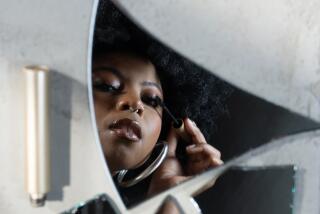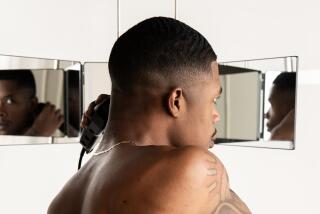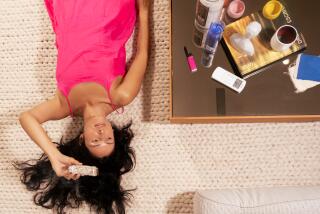Q&A: Skin-care line founder Dr. Murad finds a new art of beauty
Dr. Howard Murad, whose El Segundo-based company makes his eponymous skin-care products, has become a vocal proponent of painting, drawing and sculpting for overall well-being.
Murad, 75, was inspired in 2008 when retinal surgery forced him to spend a month looking downward. He began to paint and believes that he healed faster as a result. Since then, he incorporates art into his philosophy for skin and general health, alongside a diet that is rich in water and whole foods, targeted supplements, rest and exercise.
How do you relate creative expression and looking beautiful?
I always feel that if you put on a happy face, youâre going to look a lot more beautiful. There is an emotional component to your appearance. If there is some creative outlet, you will sleep better, be more vibrant, smile more. These are all attributes that cost nothing and have more benefit than expensive treatments.
How do you incorporate that in your medical practice?
When I see a patient, I like to look at the whole picture to understand why his or her skin is doing something. It is never just one problem. Our skin turns over once a month, so there is always a chance for renewal. I talk a lot about cellular hydration â making sure the body and skin are nourished with plenty of water and foods rich in water. Then I advise my patients to give themselves permission to be creative, in whatever form they choose.
So itâs massages, facials, spa treatments and paint brushes?
At our retreats, yes. Weâve done them in Palm Springs and New York, and will be doing more. We have an art therapy class, giving everyone paper and crayons and paints and teaching them they donât have to be perfect. I just tell them to throw paint onto a canvas and see what happens.
The idea is for people to be able to make this a regular part of their lives?
We have a traditional program at our [Inclusive Health Spa]: treatments, massages, facials, everything to improve the appearance. But in the consultation, we talk about ways people can express themselves creatively that will help their overall well-being and send them home with a plan to do that. There is more and more art therapy around, in hospitals and clinics, and research shows that it does help the healing process, even for serious illnesses. It encourages people to see outside themselves, to have a different perspective. It allows light to enter.
What have you seen in some of your patients?
Thereâs a joy that happens. Doing art can reconnect us to our childhood; young children and toddlers know they donât have to be perfect. They forgive easily. They have no problem with self-expression, with getting dirty and muddy. That only happens later, when we are taught to conform. I tell my patients, âEven if you think those two colors donât go together, do it anyway.â The most important thing we need to learn is that itâs OK to not color inside the lines.






